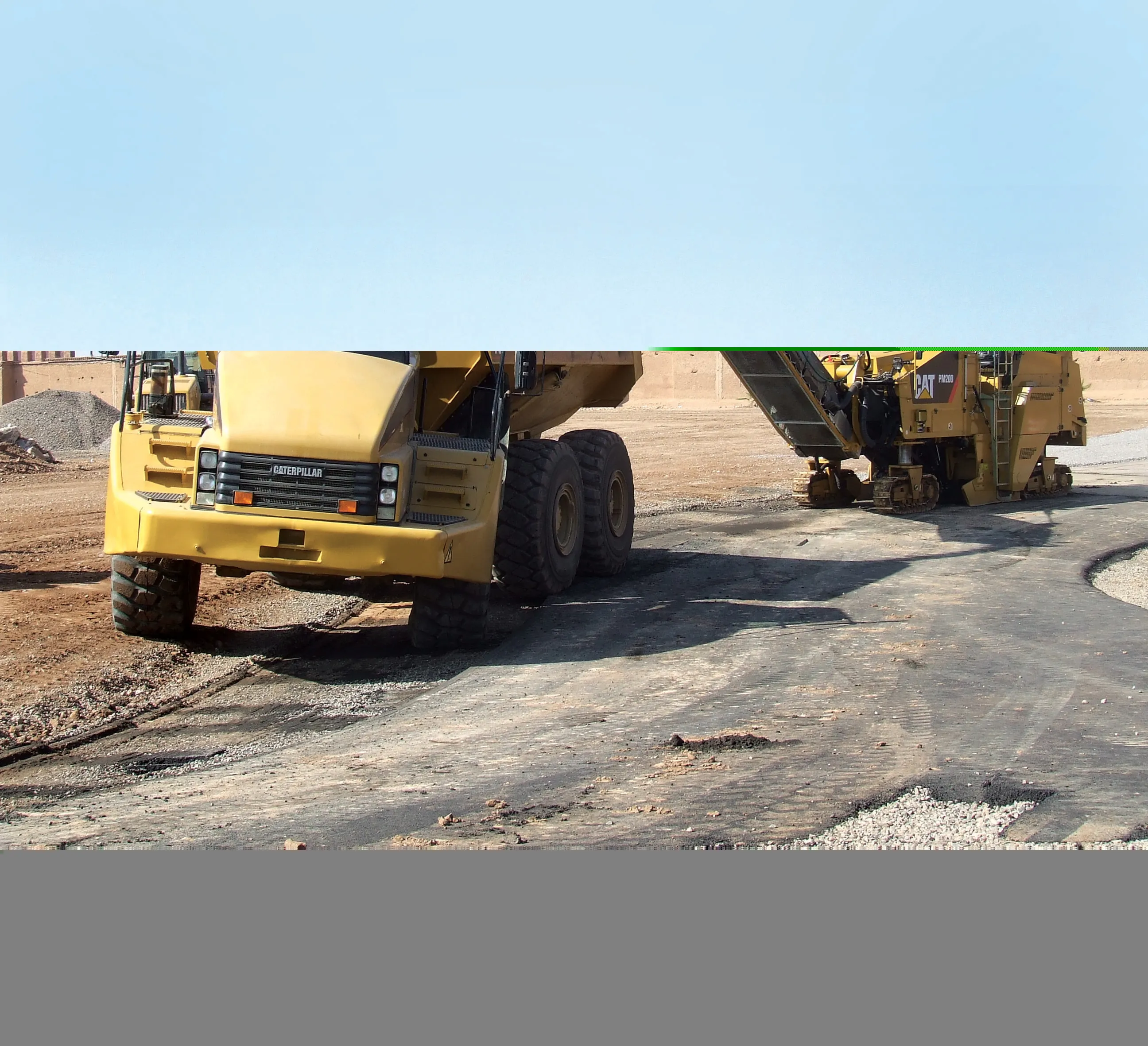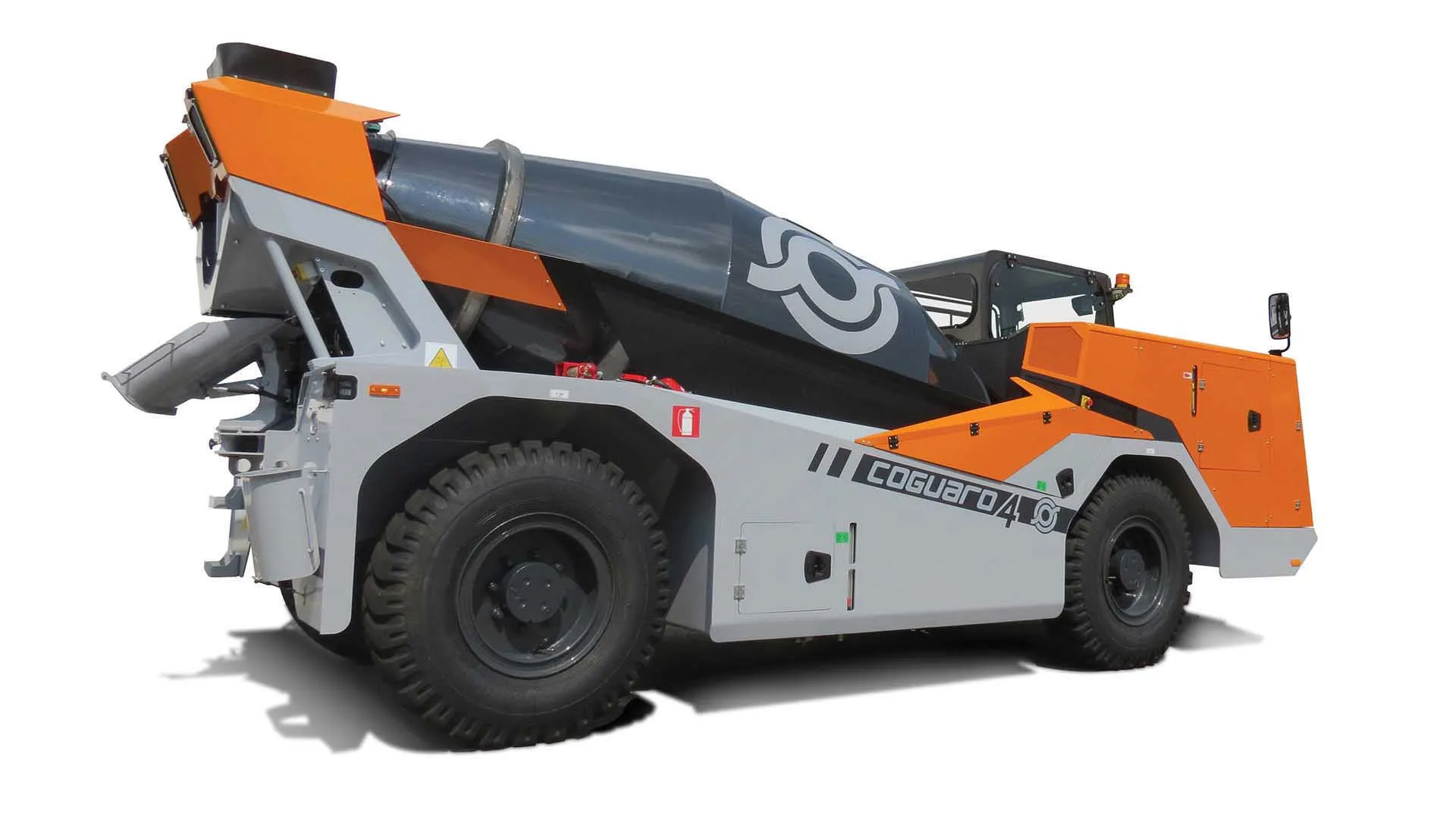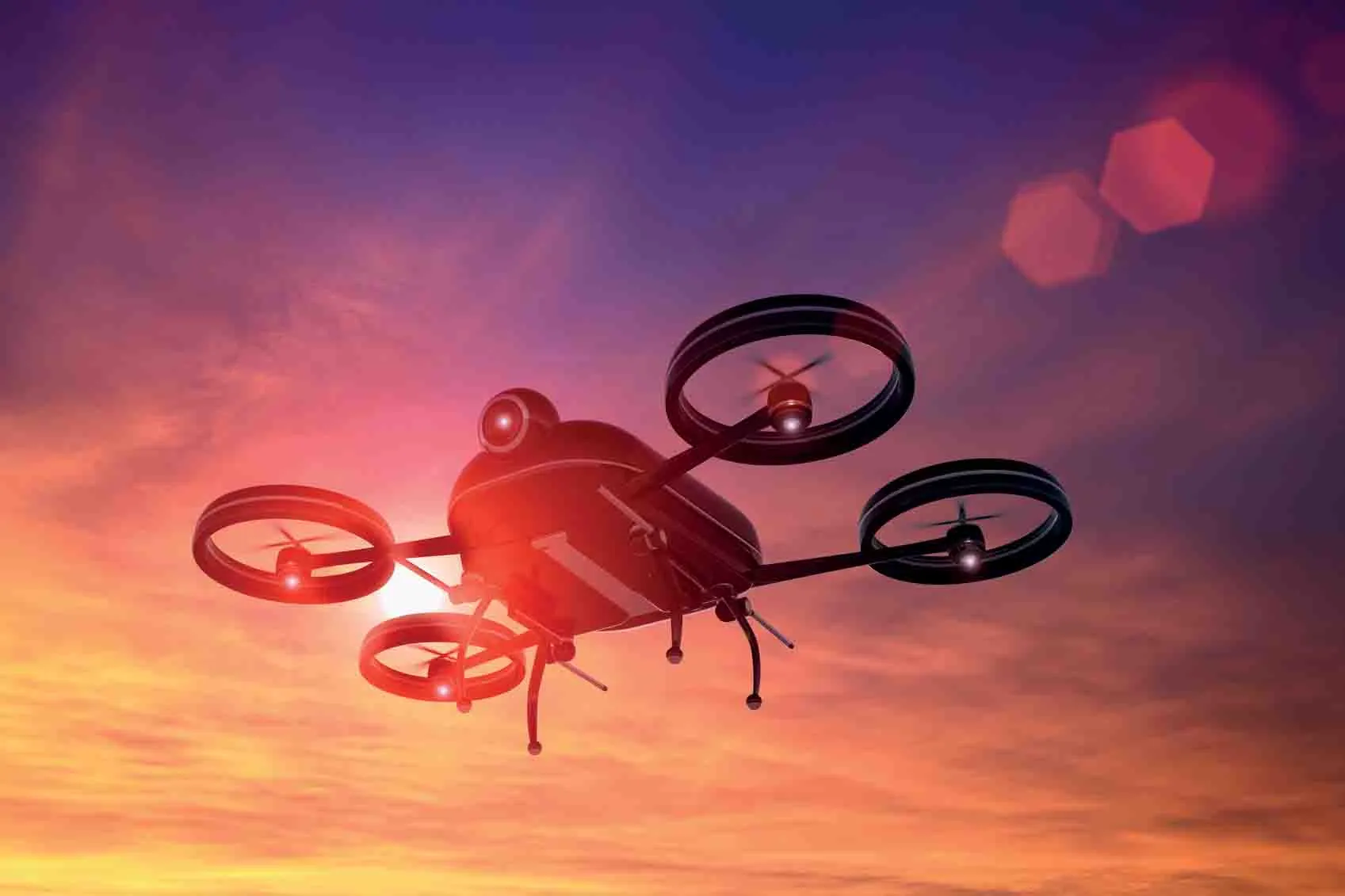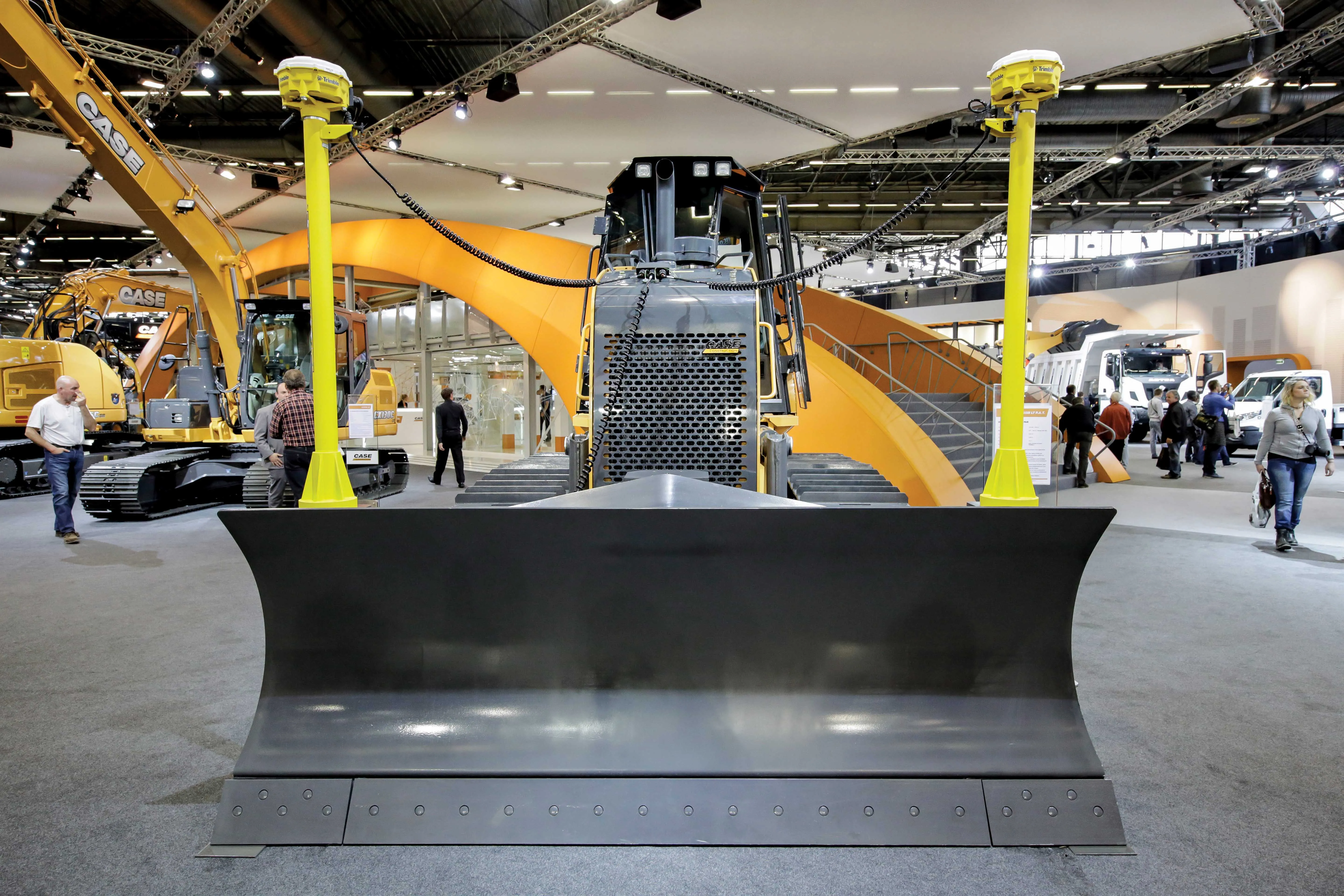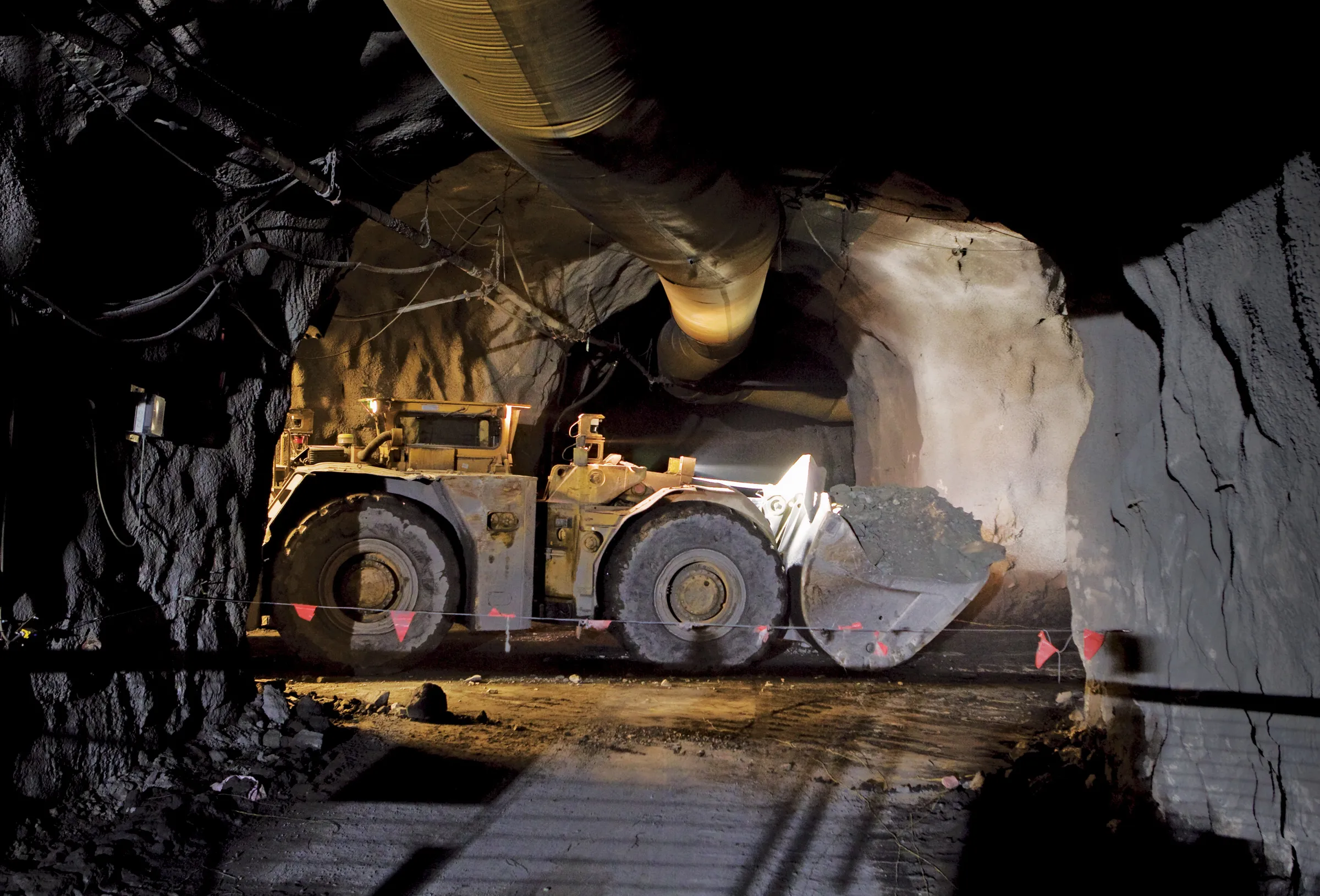
Autonomous and remote control machines are not about to take over the world, but they can provide efficiency gains and savings in some operations – Colin Sowman writes
The thought of autonomous machines may conjure up visions of an Orwellian future where society works for the ‘common good’ defined by an all-powerful being and in which people are insignificant in terms of their needs, aspirations and physical wellbeing; of machines that relentlessly carry out their task regardless of anybody or anything that is in their way. Mercifully the reality, and it is reality, could not be more different.
Vision uses multiple cameras to allow operators to select the views, via an incab display, to assess objects and activity around their machines. Object Detection adds multiple radar sensors to the Vision capability, in order that the combined systems can identify hazards within various critical zones around the machine.
It will then display that hazard on the screen along with a graphic ‘proximity bar’ to provide the operator with perspective. Proximity Awareness adds a further dimension to Vision and Object Detection by using global navigation satellite system (GNSS) receivers and data radios. These report their positions in real-time to a central office and to other instrumented machines in order that the system can detect machines on a collision course and provide adequate warning to relevant operators.
For particular sectors, such as mining and quarrying, Caterpillar has used this technology within its Command system as the basis of fully autonomous machines, enabling them to work safely and seamlessly with and around other mine site activities, equipment and personnel.
Command gathers and processes data from the machine itself and from all MineStar System equipped assets and can be configured to provide automation on a single machine or on multiple types of equipment across a fleet.
The system is application specific, and the version for mining trucks is MineStar Command for hauling. There were some initial trials of the technology at Tinaja Hills, Arizona, and at a coal mine in New Mexico in the US after which small fleets of autonomous mining trucks were installed at two iron ore mines in Australia: Fortescue Metals Group and BHP Billiton.
Both are expanding their autonomous fleets and BHPB has expanded its trials to three mines.
Such technology is perfect for repetitious production jobs such as hauling where, for instance, the machine is loaded at point A and tips the contents into a hopper at point B before returning to point A for another load. That route need not be straightforward as Caterpillar states: “Our autonomous haul trucks can negotiate complex haul roads, manoeuvre through mine site traffic and navigate efficiently to and between loading points and dump sites.”
According to the company, the on-cost for automation is high and only justified when high volumes of material are being moved (especially at remote mines) or in dangerous situations. However, it said mines that have invested in putting autonomous technologies to work have experienced a number of other benefits, including increased productivity, higher equipment utilisation and less machine damage.
Some sites have reported speed and efficiency increases that shorten cycle times and increase production by up to 25% while sidewall impact damage has been eliminated.
Drilling is another area where full autonomy is possible.
There are some operational gains such as precise hole location, spacing and depth to provide maximum production from each blast, but the overwhelming benefit is keeping operators away from potentially dangerous areas such as unstable cliff edges. Indeed the original desire to remove the operators from cabs was precisely to allow machines to work in potentially dangerous areas - be those military or civilian.
In particular specialist applications such as the repair and decommissioning of nuclear power plants, remote control (rather than autonomous machines) are almost a prerequisite because of the danger even entering certain areas would pose to human operators.
However, for the majority of applications full machine autonomy is some way off and will not be achieved in a single step but as a succession of automated functions and remote operations – some of which are already evident.
One long-standing example is
If there is a collapse during delicate operations like these, the machine may be hit by falling material or fall a floor or more - but the operator will still be safe. One of the reasons that remote control technology is more likely to readily find wider use than full automation is because much work carried out by roadbuilding, construction and waste handling machinery has (currently) nonautomated elements.
These include: the filling of a bucket because the stockpile changes as each load is extracted or fresh material added; demolition; collecting and delivering material to various ad-hoc stockpiles; backfilling trenches; sorting waste for recycling… the list goes on.
To cater for these types of applications Caterpillar has both remotely operated and line-of-sight control options on some machines which employ a higher or lower level of automation. For instance there are several dozen Caterpillar semi-autonomous underground loaders and load-haul-dump machines being operated commercially in underground hard rock mines using its Command for underground system. Rival firm
The technology used by both firms is broadly similar and allows a human operator to view proceedings via closed-circuit television and to use tele-remote control (from a distant location) to load the bucket. From that point on the system then controls the machine autonomously as it trams to the dump point, dumps the load and returns to the loading area. Using this system one operator can control more than one machine depending on the length of the haul and the time needed for the round trip.
Having removed the need for a person to sit in a cab, the operator can be hundreds of kilometres away and still be able to control the machine with the same ease and precision they would have if they were sitting in the cab. This is particularly beneficial in mining applications, sometimes because the mine is in a remote location but mainly because the operator can stay above ground saving travelling time at the beginning and end of shifts and evacuation delays encountered before and after blasting.
A variation of this remote control technology is employed in Caterpillar’s line-of-sight remote control system for large dozers - Command for dozing. The partial automation of machine processes is not new as return to dig and travel modes on wheeled and backhoe loaders has become a standard feature on many models as has ‘auto dump’ on articulated dump trucks. Not only can the technology be used to automate repetitive functions across a whole range of machines, it can also be used for precision work through the use of machine control.
When rough dozing the operator only needs to operate the traction control lever as the system will not only cut close to grade, it will also control the blade loading and reduce the cut where necessary. As the work progresses, the blade control system automatically changes to finish grading mode for an automated fine finishing cut/ fill operation for high levels of precision and productivity.
Each successive introduction of technology to automate an operation, reduce potential accidents or increase productivity is another piece of the jigsaw which could, at some time in the future, be joined together to provide autonomous machine operation in particular operations.
He highlights the prospect and potential of intelligent machines on all fronts; be that in active safety or fully autonomous and said increased machine intelligence will bring numerous advantages. Furthermore, he also envisages the use of automation outside of the high production mining environment and sees it as a way of increasing safety in construction equipment. Indeed a research project at the company has developed a wheeled loader and an excavator that can demonstrate simple loading and digging tasks without an operator on board.
Hitachi
Out of this world
Remote control of machines is a key technology in American space agency NASA’s plans to build a landing strip on the moon or Mars and to mine minerals that could be brought back to Earth. At the 2011 Conexpo exhibition the company said it was working with NASA to develop a remotely controlled motor grader that could be used create a level landing strip on another world.
Furthermore, Caterpillar continues to sponsor NASA’s Robotic Mining Competition. Now in its sixth year the competition is for university-level students to design and build a mining robot that can traverse the simulated Martian chaotic terrain, excavate Martian regolith (the top layer of dust, soil, broken rock, and other related materials) and deposit it into a collector bin within 10 minutes.
This is perhaps the ultimate testament to Caterpillar’s mantra of ‘Wherever there’s mining, we’re there.’
Cranes & Concrete
Crane operations and concrete placement are natural applications of line-of-sight remote control as instead of relying on a signaller, the operator can be right on the spot and see exactly what is required to complete the task. For this reason remote control has always been a standard feature of self-erecting tower cranes (albeit initially a ‘wander lead’) and have of late become a feature on many concrete pumps. However, with bigger cranes where heavy loads often hang many metres below jibs extended to their maximum reach, the early remote control systems did not have the necessary finesse and sensitivity.
There were also concerns about taking the operator out of the cab in case they did not hear an overload or other alarm.
Now, however, the crane manufacturers have overcome these problems by building the technology into the machine’s control circuits and using two-way communications to ensure the operator does not miss any alarms or other information even if they are not in the cab. Remote control is now an option (or even standard) on many new cranes.


